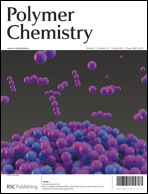A hydroxyl diamine, 1-(4-aminophenyl)-1-(3-hydroxyl-4-aminophenyl)-1-(6-oxido-6H-dibenz<c,e><1,2>oxaphosphorin-6-yl)ethane (1), was prepared via a facile, one-pot procedure. Based on 1, a series of poly(hydroxyl imides) (2a–2e), were prepared in NMP/xylene by solution polymerization, followed by thermal treatment. Experimental data showed that the poly(hydroxyl imides) displayed better thermal properties than the polyimides without hydroxyl groups. Polyimide–SiO2 hybrids were prepared based on the sol–gel reaction of tetraethoxysilane (TEOS) with 2e, which was prepared from the condensation of 1 and 2,2-bis(3,4-dicarboxyphenyl)hexafluoropropane dianhydride (6FDA). The hydroxyl group on the backbone of 2e provided organic–inorganic bonding. Therefore, light-yellow, transparent and flexible polyimide–SiO2 films with a maximum SiO2 content of 16 wt% were obtained without the use of a coupling agent. TEM data showed that several nanorods aggregated into a cluster, and the clusters were well dispersed in the polyimide–SiO2 hybrids. The optical and thermal properties of 2e were significantly improved by the incorporation of silica.

You have access to this article
 Please wait while we load your content...
Something went wrong. Try again?
Please wait while we load your content...
Something went wrong. Try again?


 Please wait while we load your content...
Please wait while we load your content...